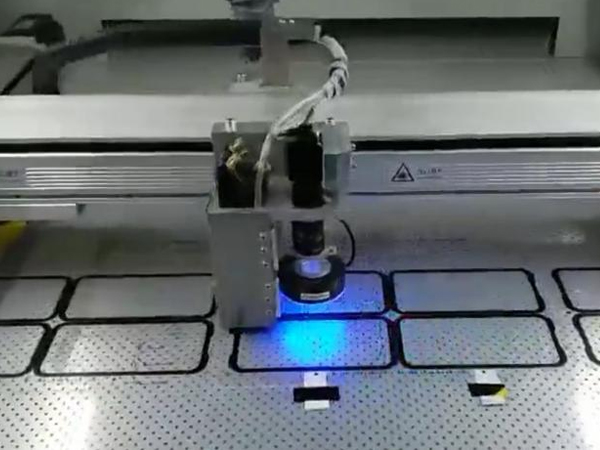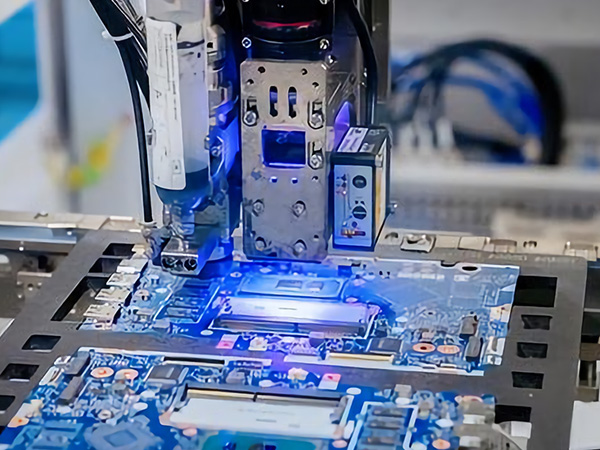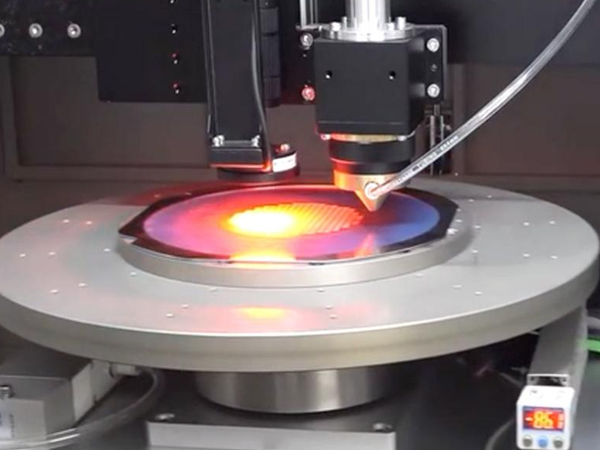Smartphones set off the first round of demand for precision laser processing. So where the next round of demand upsurge in precision laser processing may be? Precision laser processing heads for high end and chips may become the next wave of craze.
Where Is The Next Round Of Boom In Precision Laser Processing?
Not long ago, Apple Inc. officially announced the release of the new generation of iPhone 14, keeping the habit of one update a year. Many users are shocked that "iPhone has developed to the 14th generation". And it quickly won over 1 million online bookings in the Chinese market. iPhone is still popular with young people.
Smartphones set off the first round of demand for precision laser processing
More than a decade ago, when smartphones were just launched, industrial laser processing technology was still at a low level. Fiber laser and ultrafast laser were new things and blank in the Chinese market, not to say precision laser processing. Since 2011, low-end precision laser marking has been gradually applied in China. At that time, small-power solid pulse green laser and ultraviolet laser were discussed. And now, ultrafast laser has gradually been used for commercial purposes, and ultrafast precision laser processing is being talked about.
The mass application of precision laser processing is largely driven by smartphone development. Productions of camera slides, fingerprint modules, HOME keys, camera blind holes, and irregular-shape cutting off mobile phone panels, etc., all benefit from the technology breakthrough of ultrafast laser precision cutting. The precision processing business of the main Chinese laser precision processing manufacturers is from consumer electronics. That is to say, the last round of boom in precision laser processing is powered by consumer electronics, especially smartphones and display panels.
Laser Panel Cutting
Since 2021, consumer products such as smartphones, wearable wristbands and display panels have shown a downward trend, leading to a weaker demand for consumer electronics processing equipment and greater pressure on its growth. So can the new iPhone14 initiate a new round of processing boom? But judging from the current trend that people are less willing to purchase a new phone, it is almost certain that smartphones can not contribute to the new growth in market demand. 5G and foldable phones that are popular a few years ago can just bring partial stock replacement. So, where the next round of demand upsurge in precision laser processing may be?
The rise of china's semiconductor and chip industry
China is a veritable world factory. In 2020, the added value of China's manufacturing industry accounts for 28.5% of the world share. It is Chinese huge manufacturing industry that brings enormous market potential for laser processing and manufacturing. However, China's manufacturing industry has a weak technical accumulation in the early stage, and most of them are middle- and low-end industries. The past decade has witnessed a great progress in machinery, transportation, energy, marine engineering, aerospace, manufacturing equipment, etc., including the development of lasers and laser equipment, which has greatly narrowed the gap with the international advanced level.
According to the statistics from Semiconductor Industry Association, mainland China is the world's fastest fab builder, with 31 large fabs focusing on mature process expected to be completed by the end of 2024; The speed has greatly exceeds the 19 fabs scheduled to be put into operation in Taiwan, China during the same period, as well as the 12 fabs expected in the United States.
Not long ago, China announced that the Shanghai integrated circuit industry has broken through the 14nm chip process and achieved a certain mass-production scale. For some of the chips above 28nm used in home appliances, automobiles and communications, China boasts exceeding mature production process, and can perfectly meet the overall demand for most of the chips interiorly. With the introduction of the U.S. CHIPS Act, the chip technology competition between China and the United States is more intense, and there may be a supply surplus. 2021 witnessed a significant decline in China's imports of chips.
Laser Processed Chip
The laser used in semiconductor chips processing
Wafers are the basic materials of semiconductor products and chips, which need to be mechanically polished after growth. In the later stage, wafer cutting, also known as wafer dicing, is of great importance. The early short-pulse DPSS laser wafer cutting technology has been developed and matured in Europe and the United States. As the power of ultrafast lasers increases, the use of it will gradually become the mainstream in the future, especially in the procedures like wafer cutting, micro-drilling holes, closed beta tests. The demand potential of ultrafast laser equipment is comparatively large.
Now, there exist precision laser equipment manufacturers in China that can provide wafer slotting equipment, which can be applied to the surface slotting of 12-inch wafers under 28nm process, and laser wafer crypto cutting equipment applied to MEMS sensor chips, memory chips and other high-end chip manufacturing fields. In 2020, a large laser enterprise in Shenzhen developed laser debonding equipment to realize the separation of glass and silicon slices, and the equipment can be used to produce high-end semiconductor chips.
Laser Cutting Chip Wafer
In mid-2022, a laser enterprise in Wuhan debuted full-automatic laser-modified cutting equipment, which was successfully applied to laser surface treatment in the field of chips. The device uses a high-precision femtosecond laser and extremely low pulse energy to perform laser modification on the surface of semiconductor materials in the micron range, thus greatly improving the performance of semiconductor optoelectronic devices. The equipment is suitable for high-cost, narrow-channel (≥20um) compound semiconductor SiC, GaAs, LiTaO3 and other wafer chip internal modification cutting, such as silicon chips, MEMS sensor chips, CMOS chips, etc.
China is tackling key technical problems of lithography machines, which will drive the demand for excimer lasers and extreme ultraviolet lasers related to the use of lithography machines, but there is little research in this field before in China.
Precision laser processing heads for high end and chips may become the next wave of craze
Due to the weakness in China's semiconductor chip industry before, there was little research and applications on laser processing chips, which were firstly used in the terminal assembly of downstream consumer electronic products. In the future, the main market for precision laser processing in China will gradually move from the processing of general electronic parts to upstream materials and key components, especially the preparation of semiconductor materials, biomedical, and polymer materials.
More and more laser application processes in the semiconductor chip industry will be developed. For high-precision chip products, non-contact optical processing is the most suitable method. With the huge demand for chips, the chip industry is very likely to contribute to the next round of demand for precision laser processing equipment.

We're here for you when you need us.
Please complete the form to contact us, and we'll be happy to help you.












































































































